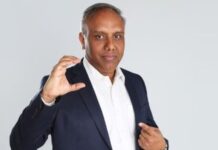The rise of technologies is challenging one-click generation in an unprecedented way. Would you believe when I say most workers hate their jobs? The reason is very simple, they are either not recognized by their superiors or they do not feel aligned to the overall scheme of leadership, organization, and its vision.
Fewer employees are engaged and we expect this trend to continue till the end of the decade. As engagement falls, organisations can expect greater attrition, higher abseentism, lower customer satisfaction and overall impacting the bottom lines.
Why should we be concerned about employee happiness? Aren’t there more important issues such as sales, marketing, finance, and operations? The truth is all of these issues are better met by employees who are happy and enjoy their work.
Firstly you with leadership must define what ‘ideal employee’ is! Your definition of ‘ideal employee’ may be different, from others. Next step would be to distinguish between, engagement and its consequences. Just as a ‘casting director’ engages a particular actor for a role, keeping in mind the story of the movie, the age bracket, and his potential to do justice to the role; a leader plays a pivotal role in identifying the right actors, by ‘matching their age’, their potential, efficiency, and the dedication to do justice to the assigned roles. In other words, ‘keeping them engaged’ and extracting the best out of them!
As a people’s manager, you would agree that in every organization there is diversity, generation gap, which generates different outlooks. Diversity impacts directly on individual’s skills or knowledge fissures, technology management, self-confidence, multi-tasking drive, ability to peruse challenges, and work in teams. This is different for different age groups. There is no one-fit- for-all approach at an organization level.
Good and engaged people are our key assets. Fully engaged scores of 9 per cent in Indian context are quite alarming. Leaders in the long run should move from ‘team focused’ approach to a more ‘individual focused’ approach. We all are looking for engagement, as a state where a team member desires to go beyond the call of the duty. Entrepreneurial leaders must note that performance management system and career prospects of the team members is viewed as the most important engagement drivers.
Factors that we need to work on as people leaders to ensure talent retention – resolution to the key issues, ethics, core values, conduct of the leaders, and work and life balance, especially in a 24X7 environment. Engagement needs differ in generation, mostly due to different outlook created because of our overall upbringing and culture, core beliefs, values installed in us, technological and political views in the country, and the overall world at large.
Can we compete with the world? We will have one of the youngest workforces in next decade. The responsibility is on us to provide them with the correct learning opportunities, pass on the baton, and groom them for future. Interestingly younger lot wants to contribute to make the world a better place. They all wish to be their own bosses, work in teams, have flexible work-life options and dedicatedly invest in their careers. Based on the need and characters of generation we must engage them. Taking a clue from this, let’s look at simple solutions:-
Solutions to keeping younger talent engaged-
- Engage #1 Flexible work options
- Engage #2 Usage of social media in their daily lives
- Engage #3 Up gradation of skills
- Engage #4 Career or rather personal aspiration paths
- Engage #5 Fairness of booty
- Engage #6 Open-door policy
- Engage #7 Make them part of a success story
- Engage #8 Promote a genuine best employer brand
- Engage #9 Mentorship
- Engage #10 Make them socially accountable
Let’s look at the one-click generation, which would be our workforce (currently they are still in school and colleges)! They differ from the existing young workforce in terms of usage of virtual world and gaming, messaging, and downloading. They are further more active on social media and are closer to the technology. They believe in self-learning, and are better team-players. Gamification of learning may improve teamwork in them. Leadership and community involvement can also improve engagement in them.
Mentoring at very early ages, giving responsibilities, involving them in giving proves, giving them autonomy, clarifying expectations, and sharing experiential learnings, would help engage them better. Incorporation of empathy and gratitude would help the country and world overall. They can learn faster with peer experience, so as people’s leader, we may use it in the process.
In various surveys conducted across the globe, rewards & recognition, timely booty jumped to the strongest indicator of engagement. Leaders should understand that this actually reflects employees’ perceptions of fairness. While organizations may not be able to make sweeping changes to compensation, it is important that they take steps to address these sentiments. The ability for leaders to have the personal sensitivity required to lead people and their organizations to growth is paramount in this intensely changing environment.
Empowerment and senior leadership strength with the degree of forward thinking decision making is another top priority in these surveys. In volatile situations the conventional wisdom may not apply to keeping them engaged. How can you ensure that your organization is poised to lead the way through the ambiguity, fear, and uncertainty in the current environment? Managing a company through times of uncertainty requires a different approach, as external factors and sentiment can impact the workplace. To quickly address challenges and also capitalize on market shifts, organizations – and their leaders – must be agile.
The criteria like ‘high energy’, ‘exuberance’, ‘youth’; needs to be balanced with ‘experience’, ‘skills’, and ‘loyalty’. The usage of terminology like ‘all candidates/ages are welcome’, may help in creating a diverse brand. It is important though to enroll people in your futuristic language, communicate, communicate, and again communicate flexibility.
If hiring a mature worker would benefit your business, than why not hire them? Talented leaders develop environment and make it attractive. Each generation brings to the table their own sets of values, beliefs, and attitude, towards organizations, leaders, colleagues, career path, and the overall environment. Entrepreneurial leaders need to manage diverse needs. What can help?
Solutions to keeping mature talent engaged-
- Engage # 1 Recognize talent and not the age
- Engage # 2 Be empathetic towards all age groups
- Engage # 3 Prepare your interventions to be ‘one to one’
- Engage # 4 Be flexible
- Engage # 5 Guide and share knowledge
Key to success in long run is achieved by creating an enabling environment, ensuring work-life balance, working on tangible rewards, communication, and creating a culture of recognition. Happy workers make a happy workplace. Increased productivity and profits would come automatically.
Author- Dr. Deepak Malhotra is currently associated in a reputed formal education brand NSHM, as chief people officer. He has more than 23 years of cross-industry professional exposure in the best of the brands. He has worked in all distinctive areas of human resource management. Dr Malhotra believes in the current economic scenario, we need to impact the bottom line through productivity. Match the age to keep them engaged was his first book, published by Bloomsbury.He actively writes in print media. Hungry people, better results is his second book in which he has decoded the secrets behaviors, beyond mere known competencies of very successful leaders, who have won continually.









